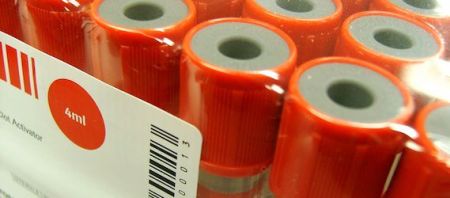More than 5 billion laboratory tests conducted each year in the US, making it healthcare’s single highest volume activity.
A major study analysing 15 years worth of published research finds several surprising elements concerning the humble blood test.
Led by investigators at Beth Israel Deaconess Medical Center (BIDMC) and reported on-line in the journal PLOS ONE, the large-scale analysis of 1.6 million results from 46 of medicine's 50 most commonly ordered lab tests reveals that on average, 30% of all tests are most likely unnecessary. Even more surprising, the results indicate that equally as many necessary tests may be going unordered.
Senior author Ramy Arnaout, MD, DPhil, Associate Director of the Clinical Microbiology Laboratories in the Department of Pathology at BIDMC and Assistant Professor of Pathology at Harvard Medical School (HMS) explains the motivation behind his research: "While working with my clinical colleagues around the hospital, I often found myself wondering about the appropriateness or inappropriateness of all of these tests. In developing this study, my coauthors and I wanted to learn more about overall lab test utilization so that we could better understand how and where errors were occurring in this extremely high-volume activity."
Their findings revealed a stark problem: Not only was there a 30 percent overall rate of test overuse- there was a similar rate of underuse, with findings on the whole highlighting a bigger issue, says Arnaout, stressing that the type of test ordered was more important than the amount of tests requested. Though lab tests were inexpensive, according to Arnaud it was the subsequent chain of events such as repeat visits, surgeries and hospital stays which were relevant to the patients as well as the economy and should be the determining factor.
Jeffrey Saffitz, MD, PhD, BIDMC Chairman of Pathology confirms that the report explores many of the nuances surrounding exactly how, when and why lab tests are ordered and misordered, leading to a pattern in
laboratory test utilisation that can reveal areas of improvement.
In order to conduct their research, the team undertook a detailed review of the medical literature. 1997, the year that the last previous review of lab tests had been conducted, was their starting point and Arnaout, together with first author Ming Zhi, MD, then a student at Harvard Medical School and currently an intern at Kaiser Permanente Santa Clara Medical Center, began by scouring a host of databases matching terms such as "laboratory," "blood test," "utilization," "overuse," and "underuse."
Arnaout states they came up with approximately 34,000 papers, however by filtering things out of their widely cast net, they eventually got down to a couple of hundred papers on laboratory utilization.
Additional refinement led to an examination of 42 papers covering 1.6 million orders of 46 of the 50 most commonly ordered lab tests, ranging from common the complete blood count and basic metabolic panel test to less common ones like D-dimer (for pulmonary embolism) and HIV-1 tests.
By defining overuse as tests that are ordered but not indicated, and underuse as tests that are indicated but not ordered, the team began estimating the overall prevalence of inappropriate testing by further differentiating between inappropriate initial testing and inappropriate repeat testing.
Contrary to the general assumption that there are usually it's too many 'repeat' tests being ordered, Arnaout explains that on a per-test basis, they actually discovered that the main problem was tests being over-ordered during a patient's initial examination, rather than during repeat tests. They came to the conclusion that this indicates ordering the right test during the initial evaluation may lead to fewer errors and better patient care.
The authors also established a number of criteria that influence how doctors order lab tests and examined their final outcomes in the context of these criteria, for example, what they call restrictive vs. permissive criteria.
"In medicine, as a rule, we only do things if there is a reason, however, as our findings showed, laboratory medicine is the exception to this rule. In ordering blood tests, we too often tend to be permissive, asking 'why not?' instead of 'why?'" says Arnaout.
First author Ming Zhi admits that as a medical resident, working on this project has had a direct impact on his own behavior as he now finds himself deciding which tests to order on a day-to-day basis.
William Taylor, MD, a clinician in BIDMC's Division of General Medicine and Primary Care agrees that efforts to identify opportunities for improvement in the selection of tests have the potential to contribute greatly to the care patients, praising Dr. Arnaout and his colleagues for setting the stage for further work to help more patients benefit from proper test selection.
Latest Articles
Research, laboratory, blood test
More than 5 billion laboratory tests conducted each year in the US, making it healthcare’s single highest volume activity. A major study analysing 15 ye...



























